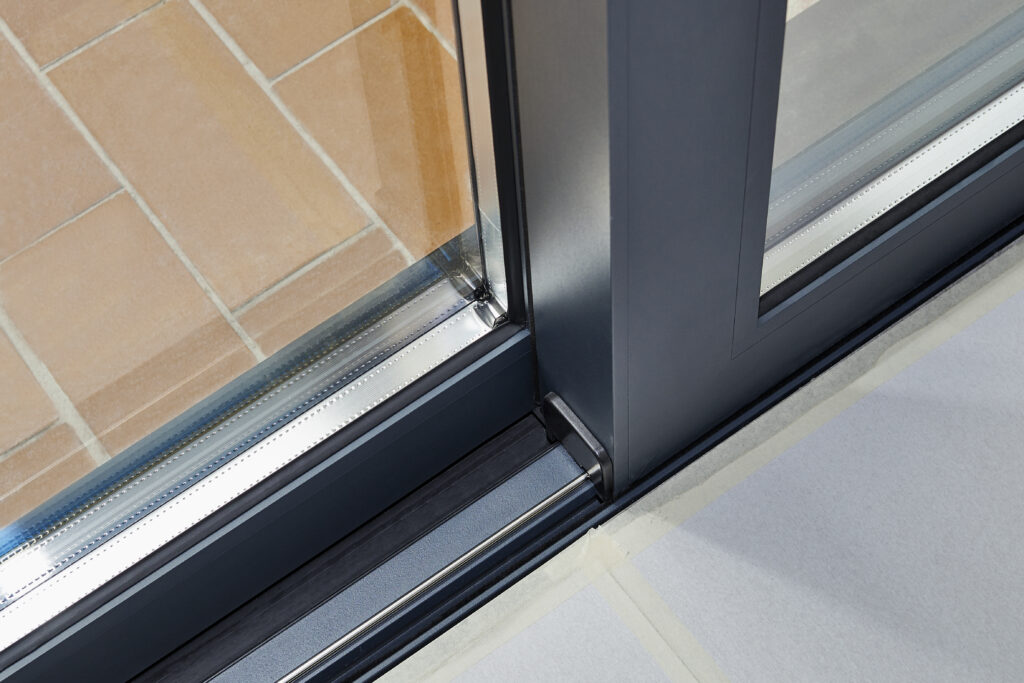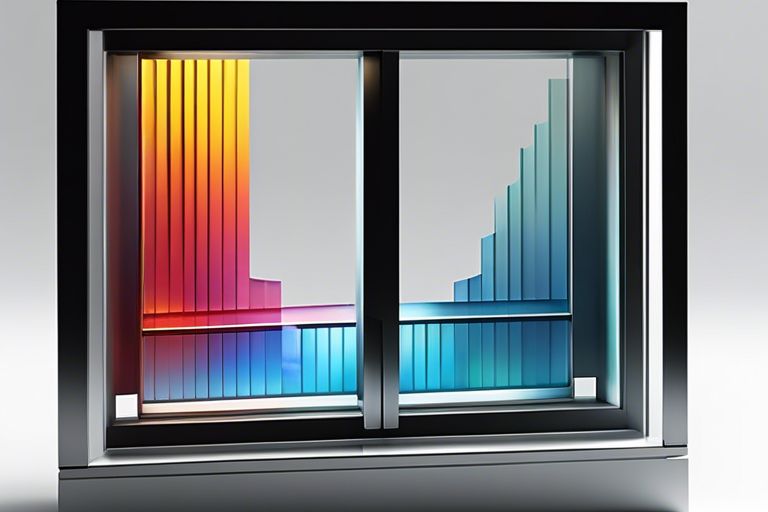Have you ever wondered if your aluminium window frames can be recycled to reduce waste and protect the environment? The good news is that aluminium window frames are 100% recyclable, making them a sustainable option for your home. In this blog post, we’ll provide you with a comprehensive rundown on the recycling process for aluminium window frames, as well as the steps you can take to ensure that your old frames are disposed of responsibly. By the end, you’ll have a clear understanding of how you can contribute to a greener future by recycling your aluminium window frames.
Key Takeaways:
- Aluminium window frames can go green: By recycling aluminium window frames, we can reduce the demand for new aluminium production which requires significant energy and resources.
- Environmental benefits: Recycling aluminium window frames helps in conserving natural resources, reducing energy consumption, and minimising the carbon footprint, thereby contributing to environmental sustainability.
- Economic advantages: Recycling aluminium window frames not only supports the environment but also offers economic benefits by reducing waste disposal costs and creating employment opportunities in the recycling industry.
The Life Cycle of Aluminium Window Frames
When considering the environmental impact of aluminium window frames, it’s important to take a holistic view of the product’s life cycle. From the initial production process to its final disposal, each stage has its own set of environmental implications. By understanding the complete life cycle of aluminium window frames, you can make informed decisions about their environmental impact.
Production and Environmental Cost
During the production of aluminium window frames, the extraction and refinement of the raw materials, primarily bauxite ore, comes with a significant environmental cost. This involves extensive energy consumption and releases greenhouse gases. However, the good news is that aluminium is 100% recyclable, meaning that the environmental impact of producing new aluminium can be significantly reduced by recycling existing materials. This makes recycling an essential aspect of reducing the environmental cost of aluminium window frames production.
Durability and Lifecycle Assessment
Aluminium window frames are renowned for their durability and longevity. This means that once installed, they have the potential to last for decades. The long lifespan of aluminium window frames reduces the need for frequent replacements, which in turn minimises the environmental impact associated with manufacturing and disposing of new frames. Additionally, the recyclability of aluminium means that at the end of their life cycle, the frames can be recycled, further reducing their environmental impact.
Innovations in Recycling Aluminium
When it comes to recycling aluminium, there have been significant innovations in recent years that have made the process more sustainable and efficient. If you’re interested in learning more about how aluminium is recycled, you can find an informative article here.
Technological Advancements
One of the most impactful innovations in aluminium recycling has been the development of advanced sorting and separation technologies. These technologies have allowed recyclers to more effectively separate aluminium from other materials, resulting in a higher quality end product. This has not only improved the overall efficiency of the recycling process but has also resulted in a reduction of waste and environmental impact.
Economic and Energy Incentives
Another key advancement in aluminium recycling is the implementation of economic and energy incentives. Many recycling facilities are now incorporating energy-efficient practices and technologies into their operations, reducing the overall environmental footprint of the recycling process. Additionally, the rising demand for recycled aluminium has created economic incentives for recyclers, making it a financially rewarding industry to be a part of.
Green Initiatives in Window Frame Manufacturing
In the quest for more sustainable and environmentally friendly practices, the window frame manufacturing industry has made significant strides in recent years. From the recycling of materials to the implementation of energy-efficient processes, the focus on going green is evident throughout the production cycle.
You can learn more about the eco-friendly efforts in aluminium window frame production by watching this informative video on Aluminum window recycling.
Sustainable Manufacturing Practices
One of the key areas of focus for the industry is the implementation of sustainable manufacturing practices. This involves reducing waste, conserving energy, and minimising the use of harmful chemicals in the production process. By adopting these practices, manufacturers can significantly reduce their environmental impact while also saving on operational costs.
Industry Standards for Eco-Friendliness
There is an increasing emphasis on adhering to industry standards for eco-friendliness. This includes certifications such as the Forest Stewardship Council (FSC) and Leadership in Energy and Environmental Design (LEED), which ensure that window frame manufacturers are meeting stringent environmental criteria. By aligning with these standards, manufacturers can demonstrate their commitment to sustainability and assure customers of their products’ green credentials.
Implementing Recycling at the Consumer Level
When it comes to recycling aluminium window frames at the consumer level, the responsibility lies in your hands. As a consumer, you play a crucial role in the overall recycling process, and your participation has a significant impact on the environment. Understanding how you can actively participate in recycling and the challenges you may face is essential for ensuring that aluminium window frames can truly go green.
How Consumers Can Participate in Recycling
As a consumer, there are several ways in which you can participate in the recycling of aluminium window frames. The most basic step is to ensure that you properly segregate and dispose of the aluminium frames from other waste materials. Be sure to familiarise yourself with local recycling guidelines and participate in designated recycling programs. Additionally, you can consider donating or selling old aluminium window frames to recycling centres or scrap metal dealers who can repurpose the materials. By taking these steps, you can directly contribute to the sustainability of aluminium window frames and reduce the overall environmental impact of these products.
Challenges and Solutions for Consumers
One of the main challenges consumers may face when recycling aluminium window frames is the lack of awareness and information about the recycling process. You may also encounter difficulties in finding suitable recycling facilities in your vicinity. However, there are solutions to these challenges. Engaging in educational initiatives and conducting thorough research can help increase your understanding of the recycling process. Additionally, reaching out to local authorities or recycling organisations can provide you with valuable information on the availability of recycling facilities and programs in your area. By being proactive and seeking out solutions, you can overcome these challenges and actively contribute to the recycling efforts for aluminium window frames.
Following this
By recycling aluminium window frames, you are contributing to the sustainability of our environment. As discussed in The Environmental Benefits of Using Recycled Materials in the Production of Double Glazed Windows, the use of recycled materials in window production helps reduce energy consumption and greenhouse gas emissions. So, when it comes to aluminium window frames, rest assured that they can definitely go green, and you can be a part of this positive environmental impact by choosing to recycle them.
FAQ
Q: Can aluminium window frames be recycled?
A: Yes, aluminium window frames are fully recyclable and can be easily melted down and repurposed into new products.
Q: Are there any benefits to recycling aluminium window frames?
A: Recycling aluminium window frames helps to reduce the demand for new aluminium production, saving energy and reducing greenhouse gas emissions.
Q: What is the process for recycling aluminium window frames?
A: The recycling process involves collecting the aluminium window frames, melting them down in a furnace, and then casting the molten aluminium into ingots for reuse.
Q: Are there any specific requirements for preparing aluminium window frames for recycling?
A: It is best to remove any non-aluminium components, such as glass or rubber seals, before recycling. This ensures a more efficient and effective recycling process.
Q: Can painted or coated aluminium window frames be recycled?
A: Yes, painted or coated aluminium window frames can still be recycled. The coating will be burned off during the recycling process, leaving behind pure aluminium for reuse.
Q: Where can I recycle aluminium window frames?
A: Many local recycling centres accept aluminium window frames for recycling. Additionally, scrap metal yards or specialised recycling companies may also offer recycling services for aluminium window frames.
Q: What are the environmental benefits of recycling aluminium window frames?
A: Recycling aluminium window frames reduces the need for mining and refining new aluminium, conserves energy, and reduces the amount of waste sent to landfill, ultimately contributing to a healthier environment.






